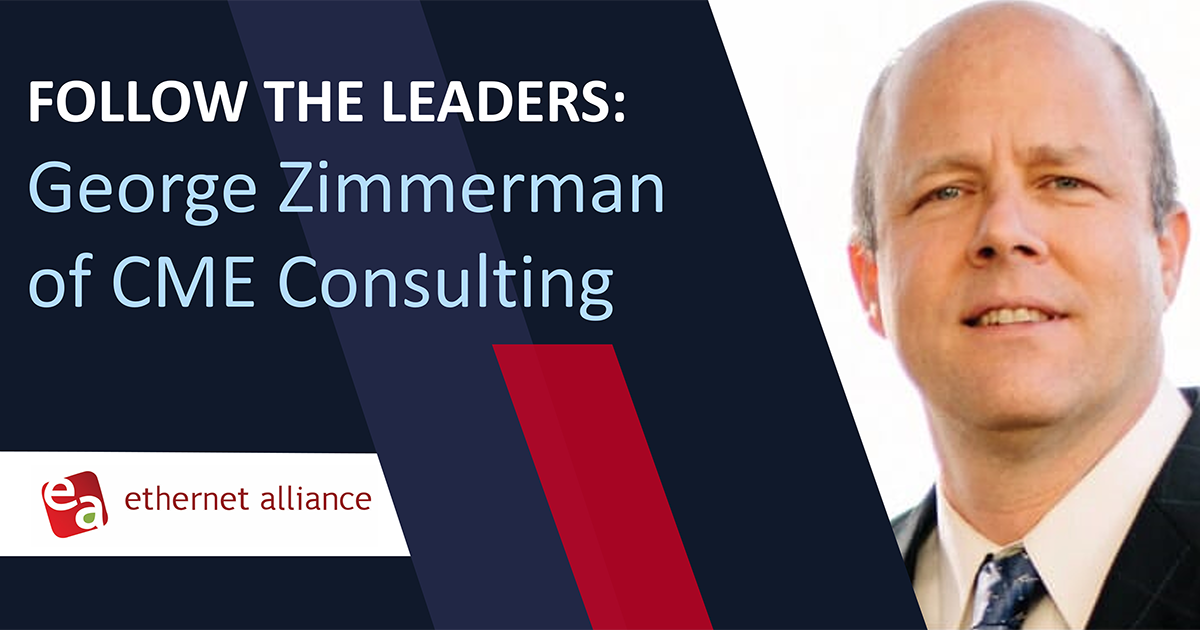David Fair, Ethernet Alliance Board Member
David  Fair joined the Ethernet Alliance in February, 2012 and has served as a member of its iWARP in the Data Center working group (iWARP brings remote direct memory access (RDMA) capabilities to Ethernet). David is currently Unified Networking Technologies Marketing Manager for Intel’s Data Center and Connected Systems Group / LAN Access Division. During his 15 years at Intel, he has been responsible for driving the adoption of new technologies in the marketplace. Some of the technologies for which he has worked to create an ecosystem include USB, PCI Express, DVD and DVI.
Fair joined the Ethernet Alliance in February, 2012 and has served as a member of its iWARP in the Data Center working group (iWARP brings remote direct memory access (RDMA) capabilities to Ethernet). David is currently Unified Networking Technologies Marketing Manager for Intel’s Data Center and Connected Systems Group / LAN Access Division. During his 15 years at Intel, he has been responsible for driving the adoption of new technologies in the marketplace. Some of the technologies for which he has worked to create an ecosystem include USB, PCI Express, DVD and DVI.
Why should companies become a member of the Ethernet Alliance?
The Ethernet Alliance is valuable to any organization that has a vested interest in the success of Ethernet, including universities, as it is driving the growth and advancement Ethernet through education, interoperability, and promotion of Ethernet technologies.
What impresses you the most about the Ethernet Alliance?
The energy level. The participants from member companies working with the Ethernet Alliance are very excited about driving the organization’s strategic initiatives, including the global push, education, and interoperability. The Ethernet Alliance is successful in its mission because there is just an incredibly high level of commitment and energy among its members.
For example, we’re making some great progress engaging our member universities. We’re starting a series of webcasts about some of the research that they have been doing on Ethernet. I’d been working with one of the EA’s University Program’s affiliates on an Ethernet-related project and saw that they were an Ethernet Alliance university partner, so I asked if they would work with us on a webcast about their research and they agreed. We’re hoping to launch the series pretty quickly. That’s just one example of the exciting pace set by the Ethernet Alliance’s Board of Directors.
Just this week, it was suggested that we should try to expand number of people in our LinkedIn group. We started with 293 members and we got to more than 1,000 in less than a week’s time. This expansion is enabling us to take advantage of social networking tools to connect to people who are interested in what the Ethernet Alliance is doing. Now we can regularly notify them about events, webcasts, and other activities that might be of interest.
How would you convince more universities to get involved?
For universities working on Ethernet-related research, the Ethernet Alliance represents the opportunity to connect with other universities doing similar work. They can share their results with an audience of their peers, as well as with Ethernet Alliance members, who may find what they are working on to be beneficial. There is really no other forum or organization that can create that kind of opportunity for sharing about Ethernet.
We have an increasing number of universities signed on and have a great opportunity to get them more engaged, create value for them, and help them deliver value to the broader Ethernet community.
How does the Ethernet Alliance expand the Ethernet ecosystem?
Part of my day job, actually, is bringing iWARP capabilities to Ethernet. This is
expanding Ethernet beyond classic networking into the area of high-performance computing. What iWARP delivers is very low-latency, high-bandwidth capabilities that you don’t get in plain Ethernet. It’s an extension to Ethernet that can expand the technology in new directions in high-performance computing.
What’s being done to encourage that expansion?
The IETF specification is in place, and there are a couple of vendors that have products supporting iWARP. But at this stage, one of the most important things is to get the word out that this capability exists and is available. iWARP is software-compatible with existing high-performance computing technologies supported by the Open Fabrics Alliance, including InfiniBand, which means existing HPC code can run on iWARP Ethernet.
This illustrates how the best model for successfully introducing new technologies is actually Darwinian biology. Many times people come up with great breakthrough technologies and they fail because they are disruptive and non-evolutionary. What’s exciting about Ethernet is that it has the genetic structure to evolve into many new directions – not just higher speeds, but new capabilities.
The successful way to expand the Ethernet ecosystem is to do it in an incremental backward-compatible way. iWARP is a perfect example of a feature that is added on top of TCP/IP in a manner that doesn’t interfere with anything else. An iWARP device can be incorporated into any data system in the world today without any problems.
Ethernet has evolved in amazing ways over its 30-year span. An engineer may look at it and say, “This is ugly, I can do much better than that.” In fact, several already have, but they ended up stuck because they didn’t provide the installed base an evolutionary path to the new capabilities
What is your take on the Ethernet Alliance’s global push?
We have a tendency in the technology industry in general to be very U.S.-focused. This global push is about driving Ethernet and its new capabilities worldwide. I think that is to the benefit of the world, and the Ethernet Alliance membership, which has a vested interest in the advancement of Ethernet technologies.
At Intel, we’re pushing very hard on the transition to10G Ethernet, 10GBASE-T in particular, as we think there are tremendous benefits for this technology worldwide. But it can’t just be an Intel push – we need an entire global ecosystem of switches and other equipment that have been tested for interoperability for the technology to be successful. All Ethernet Alliance members can share in this success by pushing for interoperability testing for new technologies.
What is the focus of the global push? More countries, more standardization?
On a global scale, it’s the adoption of advancements in the Ethernet ecosystem that may not dribble out to far-flung countries. What 10GBASE-T does is create a non-disruptive, evolutionary way of getting 10G Ethernet into the data center because it uses the ubiquitous RJ-45 jack and classic Cat 6 cables. Therefore, on the data center scale, it will make 10G Ethernet dramatically less expensive, which in turn will lower the barriers to adopting new technology in far off places. The global push gets the message out to them that the technology exists and there is interoperable equipment available from many vendors.
Why is interoperability important?
Interoperability is something that is always ongoing. The Ethernet Alliance would like to focus on end-to-end interoperability testing. This is an unsolvable challenge, so we will make progress but we may never get there, partly because the challenges multiply the more steps you add. If you have 10 different adapters and 10 different switches, you have 100 cases to consider. Add another layer of 10 options and that takes you up to 1,000. But I think we can make progress by picking some key cases.
Customers hate lock-in, and vendors love to create it. As vendors as well as Ethernet Alliance members we understand that the overall success of our products requires that we do interoperability testing. The reason that technologies such as PCI Express and USB have been so successful is because of the energy and money put into making sure they were interoperable solutions that gave people choices.
One of the big challenges for the Ethernet Alliance and other organizations is going to be Fibre Channel over Ethernet (FCoE). Storage over Ethernet is a really exciting expansion of the Ethernet ecosystem. FCoE offers an effective means bringing together storage and data center bridging solutions, setting the stage for the Ethernet ecosystem to deliver on the promise of a single, converged network. In the end, this will mean huge savings – as much as 20 percent. It’s a big deal but we’re still in the early stages of adoption so interoperability demonstrations are important to driving market acceptance of FCoE.
The Ethernet Alliance can be a voice that helps change this because ultimately, the technology is not going to be successful as long as it’s standard, yet proprietary. We have to break through those barriers.
Additionally, the Ethernet Alliance is working to establish alliances with other industry groups such as SNIA’s Ethernet Storage Forum and the Fibre Channel Industry Association. We’re looking to see if we can align with these organizations on interoperability testing and/or co-marketing. These alliances will also help expand the Ethernet ecosystem.



